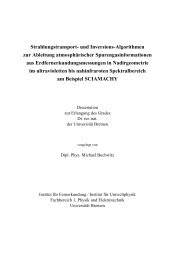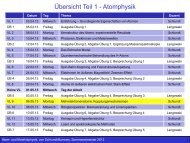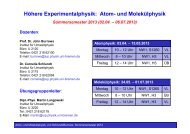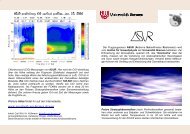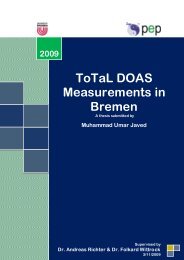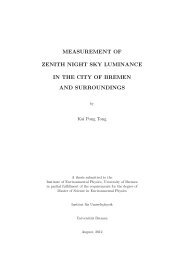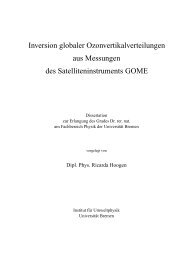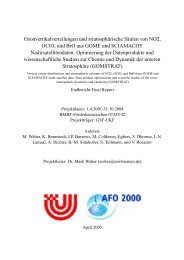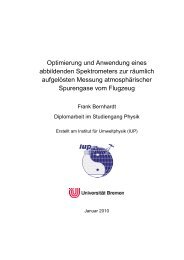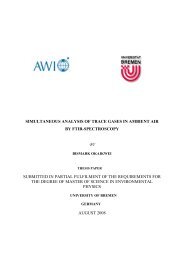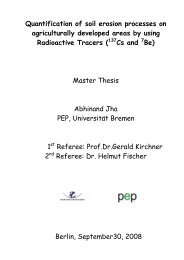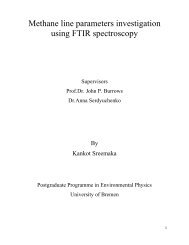True Coincidence Summing Correction in Gamma Spectroscopy
True Coincidence Summing Correction in Gamma Spectroscopy
True Coincidence Summing Correction in Gamma Spectroscopy
Create successful ePaper yourself
Turn your PDF publications into a flip-book with our unique Google optimized e-Paper software.
1.3 <strong>Gamma</strong>-Ray <strong>Spectroscopy</strong> with Semiconductor<br />
Detector<br />
For a detector serv<strong>in</strong>g as a gamma-ray spectrometer, it must carry out two dist<strong>in</strong>ct<br />
functions; i.e. first it must act as a conversion medium with reasonable probability of<br />
gamma ray <strong>in</strong>teraction yield<strong>in</strong>g one or more fast primary electrons; second, it must<br />
function as a conventional detector for secondary electrons.<br />
The requirement of full absorption of the secondary electron rules out gas-filled<br />
detectors for the spectroscopy of gamma rays, other than those with very low energy.<br />
The penetration distance of a 1 MeV electron <strong>in</strong> standard temperature and pressure<br />
(STP) gases is several meters, so that detectors of any practical size can never come<br />
close to absorb<strong>in</strong>g all the secondary electron energy.<br />
For the measurement of gamma rays above several hundred keV, there are two<br />
detector categories of major importance, <strong>in</strong>organic sc<strong>in</strong>tillators as NaI(Tl) and<br />
semiconductor detectors.<br />
The sc<strong>in</strong>tillators have the advantage of availability <strong>in</strong> large size and high density<br />
which can result <strong>in</strong> high <strong>in</strong>teraction probabilities for gamma-rays. Due to the high<br />
atomic number of iod<strong>in</strong>e, a large number of all <strong>in</strong>teractions will result <strong>in</strong> complete<br />
absorption of gamma-ray energy, so the photo fraction will be high.<br />
The energy resolution of sc<strong>in</strong>tillators is poor.<br />
Figure-1.1 shows comparative spectra with germanium and shows that it is better<br />
choice for separation of closely spaced gamma energies. The typical energy<br />
resolution of a good germanium system is few tenths of a percent compared to 5-10<br />
% for sodium iodide.<br />
The smaller size available and the lower atomic number of germanium contribute to<br />
give photopeak efficiencies an order of magnitude lower <strong>in</strong> typical cases. Moreover<br />
the photofractions are low and thus the quanta <strong>in</strong> the pulse height spectra are more<br />
of a problem. On the other hand, the good resolution of the semiconductor detectors<br />
aids <strong>in</strong> the detection of weak sources of discrete energies when superimposed on a<br />
broad cont<strong>in</strong>uum.<br />
3



